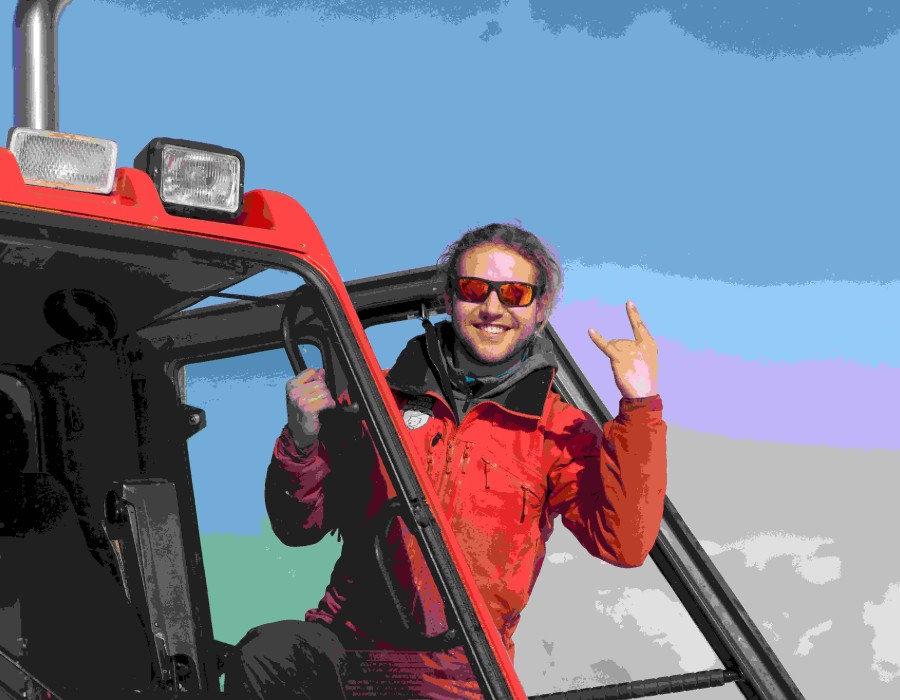Backcountry skiing is an exhilarating outdoor adventure that combines the beauty of untouched snow, the thrill of the wilderness, and the physical challenge of navigating untracked terrain. Whether you're a beginner or an enthusiast looking to enhance your skills, this guide will provide you with all the information you need to embrace backcountry skiing confidently and safely.
What Is Backcountry Skiing?
Backcountry skiing, also known as off-piste skiing, takes you beyond the groomed trails of ski resorts into natural, untouched landscapes. Unlike resort skiing, where lifts transport you to the top of runs, backcountry skiing requires self-propulsion, typically through hiking or skinning (using specialized climbing skins for your skis).
This type of skiing offers a unique experience of solitude, breathtaking views, and the joy of carving through fresh powder. However, it also demands preparation, the right equipment, and an understanding of safety measures.
The Basics of Backcountry Skiing
If you’re new to backcountry skiing, it’s important to start with a solid understanding of the basics:
1. Understanding the Terrain
Backcountry skiing can take place in a variety of terrains, including:
- Open Meadows: Ideal for beginners, offering wide and gentle slopes.
- Glades (Forested Areas): For skiers with intermediate skills, as trees add complexity.
- Steep Chutes and Bowls: Advanced terrain with higher risk and excitement.
2. Physical Fitness
Backcountry skiing is physically demanding. You’ll need to climb uphill and ski down, often in challenging conditions. Building stamina and strength through regular cardio, strength training, and flexibility exercises is crucial.
3. Skiing Skills
Before heading into the backcountry, ensure you’re comfortable with resort skiing, especially in variable snow conditions. Practice turning, stopping, and maintaining balance in ungroomed terrain.
Must-Have Gear for Backcountry Skiing
Having the right equipment can make or break your backcountry skiing experience. Here's a list of essential gear to get you started:
1. Skis and Bindings
- Backcountry Skis: Lighter and often wider than traditional skis, designed for deep snow and easy climbing.
- Touring Bindings: Allow your heels to lift for uphill movement and lock in place for downhill skiing.
2. Climbing Skins
These attach to the bottom of your skis, providing grip while ascending slopes.
3. Ski Boots
Opt for lightweight, backcountry-specific boots with a range of motion for uphill travel and stiffness for downhill performance.
4. Avalanche Safety Gear
- Beacon: A transceiver to help locate skiers buried under snow.
- Probe: A collapsible pole for pinpointing a buried person’s location.
- Shovel: Lightweight and durable, essential for digging during rescues.
5. Backpack
A sturdy backpack with compartments for avalanche gear, water, snacks, and extra clothing is essential.
6. Clothing
Dress in layers to manage body temperature effectively:
- Base Layer: Moisture-wicking fabric to keep you dry.
- Mid Layer: Insulation to retain heat.
- Outer Layer: Waterproof and windproof shell to protect against the elements.
7. Navigation Tools
- GPS Device or smartphone app for mapping and tracking your route.
- Map and Compass as backups.
Tips for a Successful Backcountry Skiing Adventure
1. Plan Your Route
Research your destination, study maps, and choose a route suitable for your skill level. Check local avalanche forecasts and weather conditions before heading out.
2. Start Small
If you’re new to backcountry skiing, begin with shorter and less technical routes. Gradually build your skills and confidence before tackling more challenging terrain.
3. Ski with a Group
Never ski alone in the backcountry. Skiing with experienced partners enhances safety and adds to the fun.
4. Take a Backcountry Skiing Course
Consider enrolling in a course to learn essential skills like avalanche safety, navigation, and rescue techniques.
5. Pack Light but Smart
Carry only what you need for your trip while ensuring you have all essentials. Overpacking can make ascents more difficult.
Safety First: Avalanche Awareness
Avalanches are one of the greatest risks in backcountry skiing. Being aware and prepared is key to minimizing danger.
1. Understand Avalanche Risks
- Avalanches occur when layers of snow become unstable.
- Factors like slope angle, weather, and snowpack conditions contribute to avalanche risk.
2. Learn to Read Terrain
- Avoid slopes steeper than 30 degrees if you’re unsure of the snow conditions.
- Look for signs of recent avalanches, such as fresh slide paths or cracked snow.
3. Practice Using Avalanche Gear
Familiarize yourself with your beacon, probe, and shovel. Practice using them in mock rescue scenarios.
4. Check Avalanche Reports
Use resources like the local avalanche center to check daily forecasts and warnings.
Common Challenges in Backcountry Skiing
1. Variable Snow Conditions
Snow in the backcountry can range from powdery to icy, making skiing more challenging than at resorts.
2. Weather Changes
The weather can change rapidly in mountainous areas. Be prepared for sudden snow, wind, or fog.
3. Physical Exhaustion
Climbing uphill and skiing down can be tiring. Know your limits and rest as needed.
Why Backcountry Skiing Is Worth It
Despite its challenges, backcountry skiing is an immensely rewarding experience. Here’s why you should consider trying it:
- Unparalleled Scenery: Escape the crowds and immerse yourself in nature’s beauty.
- Adventure and Solitude: Experience the thrill of exploration and the peace of untouched wilderness.
- Physical and Mental Benefits: Improve your fitness while reducing stress and connecting with nature.
Final Thoughts
Backcountry skiing offers a perfect blend of adventure, challenge, and natural beauty. By understanding the basics, using the right gear, and prioritizing safety, you can make the most of your experience in the wild. Whether you're a beginner or an experienced skier, the backcountry promises an unforgettable journey through pristine snow and awe-inspiring landscapes.
So, gear up, plan your route, and embark on your next backcountry adventure.





Comments